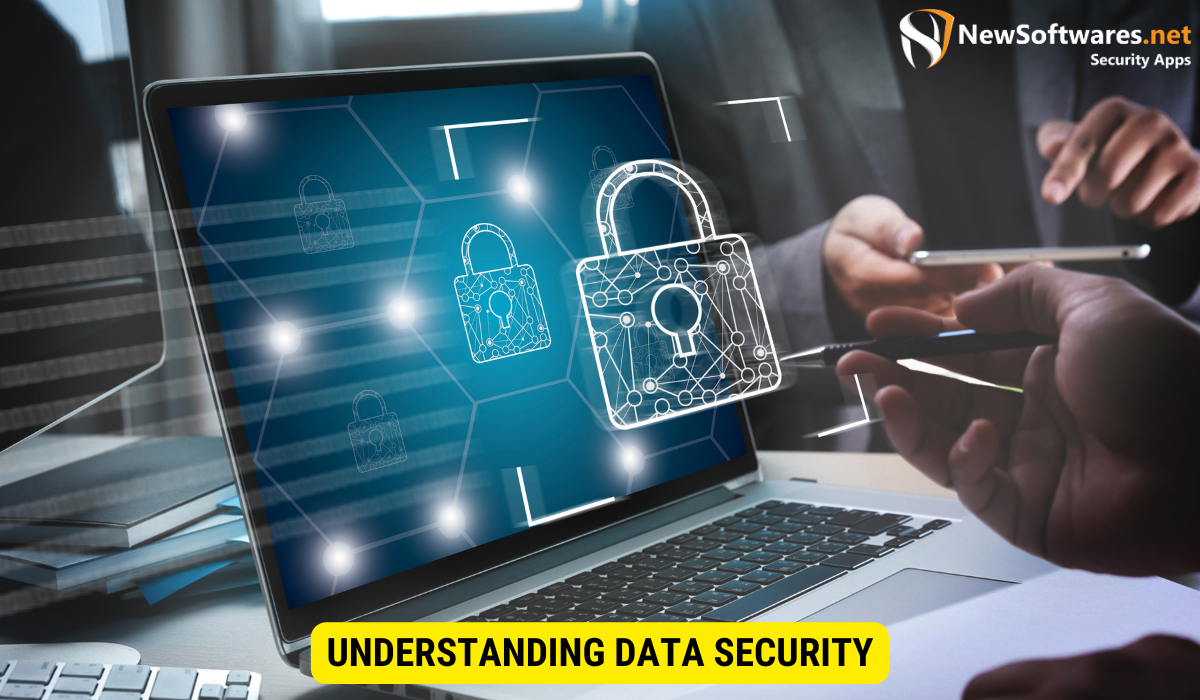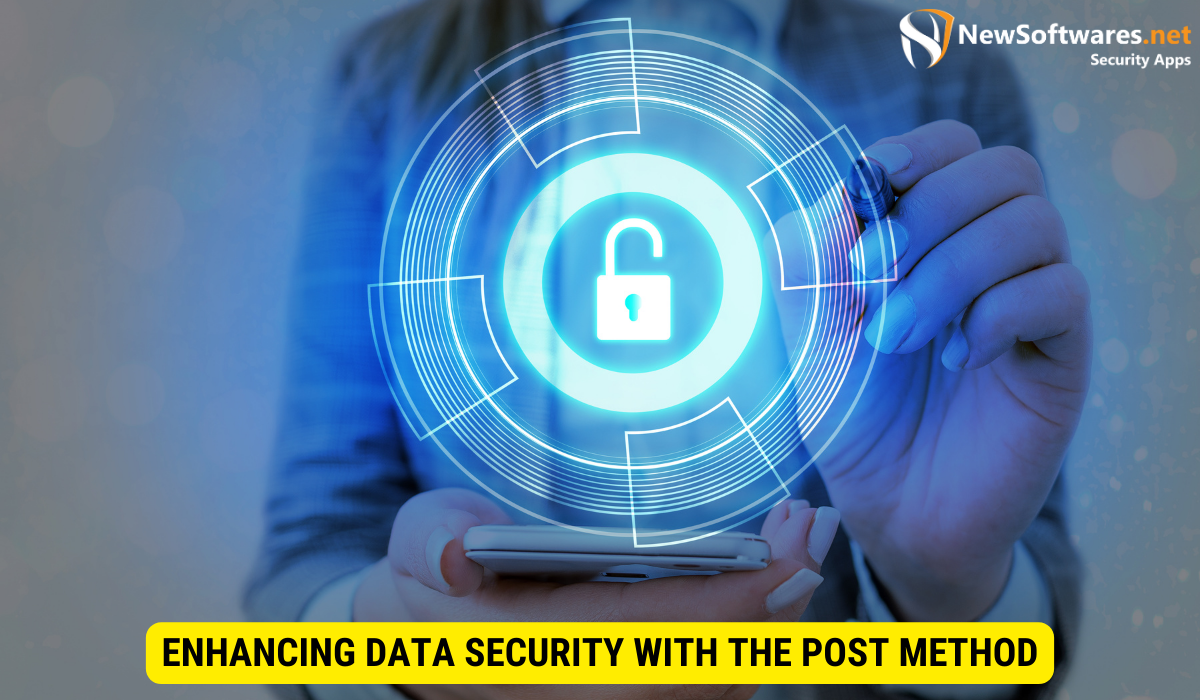Yes, data encryption can occur with the POST method if the data is being sent over a secure protocol like HTTPS.
In today’s digital world, data security is of paramount importance. With cyber threats rising, organizations must take appropriate measures to shield sensitive information from unauthorized access. One popular method of safeguarding data is encryption. However, one may wonder if data encryption occurs with the POST method, a widely used protocol for sending data over the Internet. Together, we will explore the intricacies of data security, examine the role of data encryption, delve into the POST method, and discuss how these concepts intersect to ensure robust data protection.
Understanding Data Security

The Importance of Data Security
Data security is crucial for individuals, businesses, and governments alike. In digital age, where vast amounts of information are stored and transmitted electronically, protecting confidential, sensitive, and valuable data has become a top priority. Data security involves implementing measures to safeguard information from unofficial access, use, disclosure, disruption, modification, or destruction.
Organizations are at risk of data breaches without proper data security measures, which can have severe consequences. A data breach occurs when unauthorized individuals get access to sensitive data, for instance personal information, financial records, or trade secrets. These breaches can lead to important financial losses, legal liabilities, and damage to an organization’s reputation.
Key Concepts in Data Security
When it comes to data security, several vital concepts deserve our attention:
- Confidentiality: Ensuring that only official individuals have access to sensitive information. Confidentiality measures involve implementing access controls, encryption techniques, and secure communication channels to protect data from unauthorized disclosure. For example, in a healthcare setting, patient records contain highly sensitive information that should only be accessible to authorized healthcare professionals. Robust authentication mechanisms, such as unique usernames and passwords, can help ensure that only authorized individuals can access patient data.
- Integrity: Maintaining the accurateness and consistency of data throughout its lifecycle. Data integrity measures involve implementing controls to prevent unauthorized modification, deletion, or data corruption. For instance, in financial institutions, ensuring the integrity of transaction data is crucial. Implementing checksums or digital signatures can help detect any unauthorized changes to financial transactions, ensuring the accuracy and reliability of the data.
- Availability: Ensuring that data is easily reached to authorized users whenever necessary. Availability measures involve implementing redundant systems, backup procedures, & disaster recovery plans to reduce downtime and ensure continuous access to data. For example, in an e-commerce business, ensuring website availability is essential. Implementing load-balancing techniques, redundant servers, and backup systems can help ensure that the web remains accessible even during high-traffic periods or in the event of hardware failures.
- Auditability: Keeping a record of data access and changes for accountability purposes. Auditability measures involve implementing logging mechanisms and audit trails to track and monitor data access, changes, and system activities. For instance, in a financial institution, it is crucial to maintain an audit trail of all financial transactions. This allows for traceability and accountability, ensuring that suspicious or unauthorized activities can be identified and investigated.
By understanding and implementing these key concepts in data security, organizations can better protect their valuable information and mitigate the risks linked with data breaches. Data security is an ongoing process that requires continuous monitoring, updating, and improvement to stay ahead of evolving threats and vulnerabilities.
An Overview of Data Encryption
The Role of Data Encryption in Security
Data encryption is a fundamental component of modern data security strategies. It involves converting plain, readable data into a coded format called ciphertext, unreadable without the proper decryption key. Encryption safeguards against unauthorized access, even if data falls into the wrong hands. Encryption algorithms, for instance AES (Advanced Encryption Standard) and RSA (Rivest-Shamir-Adleman), are commonly used to ensure data confidentiality.
How Does Data Encryption Work?
Data encryption employs mathematical algorithms to transform data into an unreadable format. This process requires an encryption key, either a symmetric key (the similar key is used for encryption and decryption) or an asymmetric key (two mathematically related keys are used). The encryption key ensures only authorized parties can access the decrypted data, preventing unauthorized interception or tampering.
Exploring the POST Method
What is the POST Method?
The POST method is a widely used HTTP (Hypertext Transfer Protocol) protocol for sending data from a client to a server. It is commonly used in web forms, e-commerce transactions, and API requests. When using the POST method, data is sent in the body of the HTTP request rather than in the URL, making it suitable for transmitting sensitive information.
The Functionality of the POST Method
The POST method offers several advantages:
- Security: As mentioned earlier, the POST method allows data to be transmitted in the request body, reducing the chance of exposing sensitive information in the URL.
- Capacity: The POST method supports larger data payloads compared to the GET method, which is limited by URL length restrictions.
- Versatility: The POST method can be used for various purposes, including form submission, file uploads, and API requests.
Data Encryption and the POST Method
The Relationship Between Data Encryption and the POST Method
The POST method and data encryption are not mutually exclusive. They can complement each other to enhance data security. While the POST method ensures the secure transmission of data, encryption ensures the confidentiality of that data. By combining the two, organizations can mitigate the risk of unauthorized access at transmission and storage levels.
Does the POST Method Support Data Encryption?
Although the POST method does not provide built-in data encryption, it can be used with encryption techniques to secure the transmitted data. Organizations can implement encryption algorithms, such as SSL/TLS (Secure Sockets Layer/Transport Layer Security), to encrypt the data before it is sent using the POST method. This ensures that the data remains encrypted and unreadable to unauthorized parties, even if intercepted.
Enhancing Data Security with the POST Method

Best Practices for Using the POST Method
To maximize data security when utilizing the POST method, organizations should follow these best practices:
- Implement SSL/TLS: Enable secure communication using SSL/TLS certificates to encrypt data during transmission.
- Validate and Sanitize Data: Thoroughly validate and sanitize input data to avoid common security vulnerabilities, for example injection attacks.
- Restrict Access: Implement proper access controls to ensure only authorized individuals can use the POST method.
- Use Encryption at Rest: Implement encryption techniques to protect data at rest, preventing unauthorized access if the data storage is compromised.
- Stay Informed: Frequently update yourself on the latest security practices and stay vigilant against emerging threats.
The Future of Data Security and the POST Method
As data breaches continue to make headlines and cyber threats become more sophisticated, the future of data security will undoubtedly rely on a combination of robust encryption methods and secure data transmission protocols like the POST method. Organizations must stay proactive, investing in advanced security measures and keeping up with evolving technologies to ensure the privacy and integrity of their valuable data.
Key Takeaways
- Ensuring data security is crucial in today’s digital landscape, and data encryption plays a vital role in safeguarding sensitive information.
- The POST method, a widely used protocol for data transmission, can be used in conjunction with encryption techniques to enhance data security further.
- Organizations can effectively protect their data by implementing SSL/TLS certificates, validating and sanitizing data, restricting access, using encryption at rest, and staying informed.
FAQs
Is the POST method more secure than the GET method?
The POST method is generally considered more secure than the GET method. While the GET method sends data through the URL, making it visible and potentially exposed to unauthorized parties, the POST method sends data in the body of the HTTP request, reducing the chances of data interception.
What is SSL/TLS?
SSL/TLS (Secure Sockets Layer/Transport Layer Security) is a cryptographic protocol that provides secure communication over the Internet. It encrypts data transmitted between a client and a server, ensuring the data’s confidentiality, integrity, and authenticity.
Can data encryption prevent all types of data breaches?
Data encryption is crucial to data security, but it cannot prevent all data breaches. While encryption ensures unauthorized parties cannot access the decrypted data, it does not protect against insider threats, social engineering attacks, or vulnerabilities at the endpoint where data is accessed or stored.
Are there any disadvantages to using the POST method?
While the POST method provides enhanced security for transmitting data, it also has a few drawbacks. Since data is sent in the request body, the POST method requires more server resources than the GET method. Additionally, the POST method cannot be bookmarked or cached like the GET method, potentially affecting user experience and performance.
How can I keep up with the latest data security practices?
Keeping up with the rapidly evolving field of data security can be challenging. However, you can stay informed by regularly reading industry publications, attending conferences or webinars, and following reputable security experts and organizations on social media platforms. Continually educating yourself and adapting your security practices to the latest threats is vital.
Conclusion
In conclusion, data security is of utmost importance in today’s technology-driven world. Data encryption and secure data transmission protocols, such as the POST method, are essential components of a comprehensive data security strategy. Organizations can efficiently protect their valuable data from unauthorized access by implementing encryption techniques, following best practices for using the POST method, and staying informed about emerging security threats.
